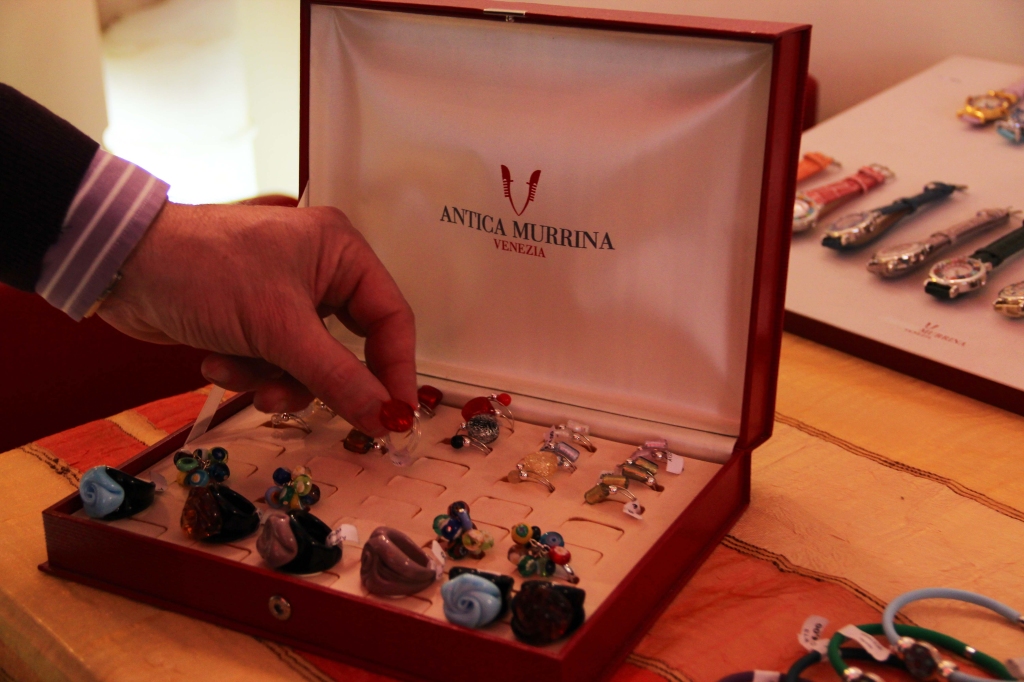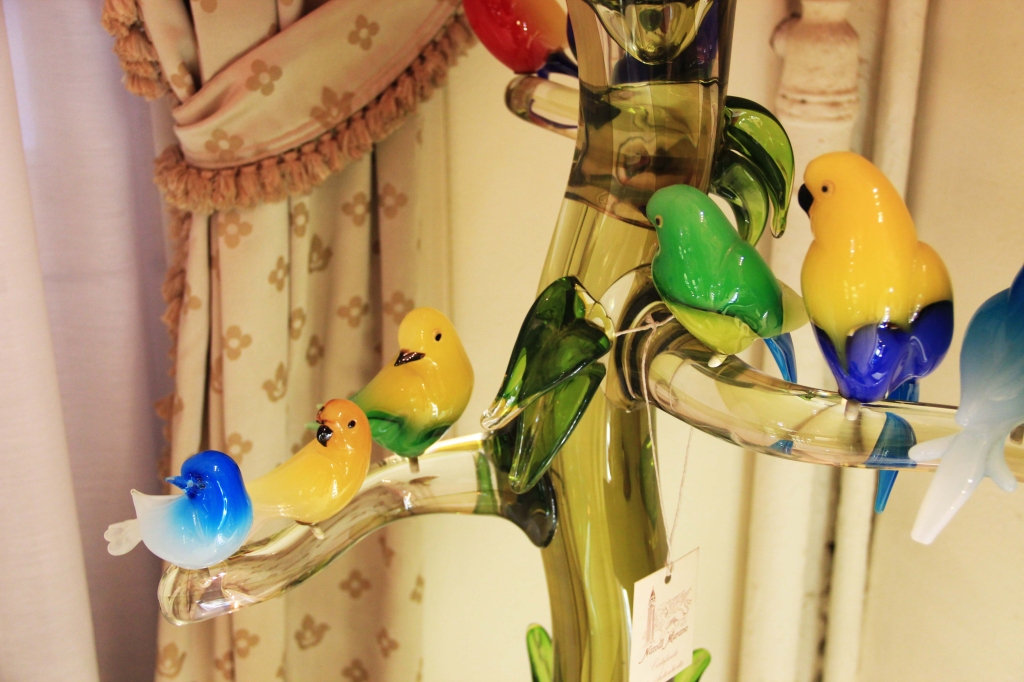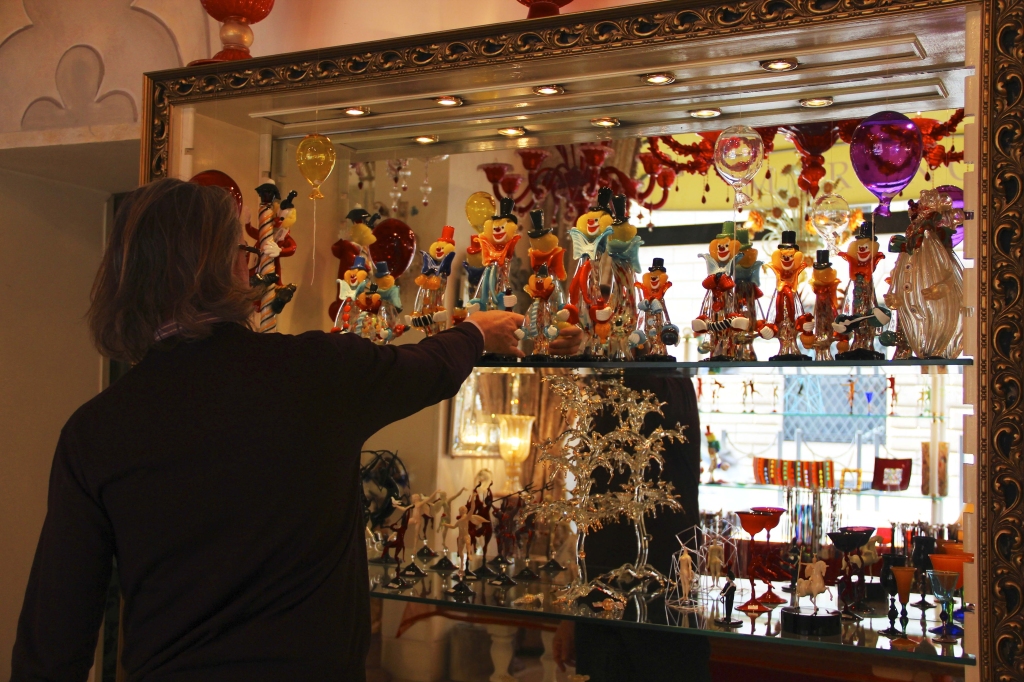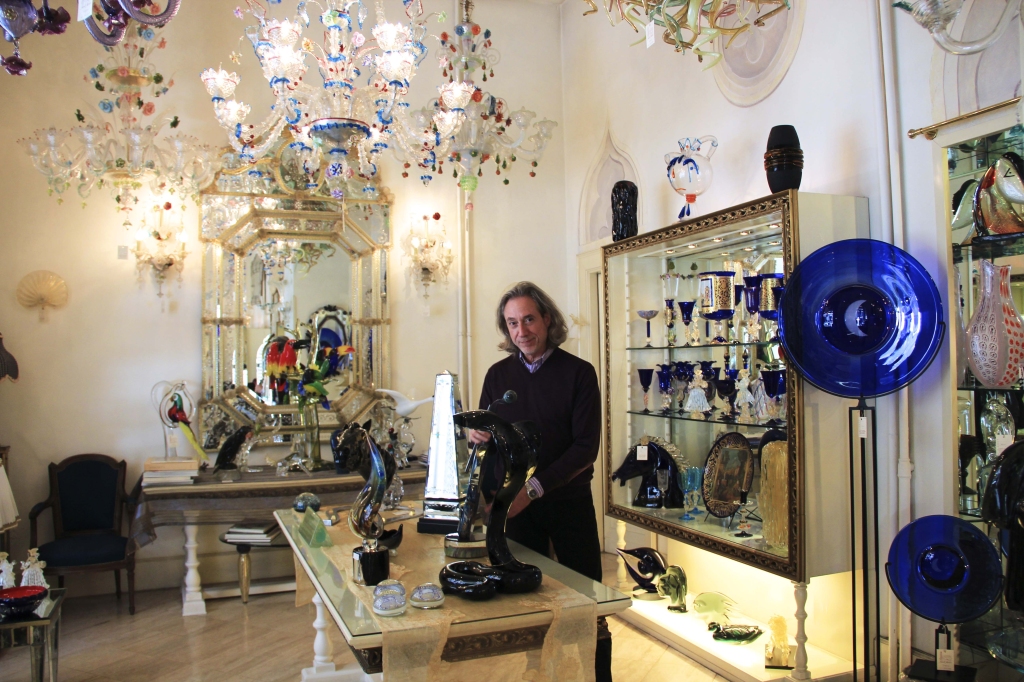Venetian Murano glass
Venetian glass is a type of glass made in Venice, Italy, typically on the island of Murano. By the 10th century, the city of Venice had become well known for its glassmakers who created unique Murano glass. The tradition of glass blowing on the island is still popular today and about 90% of Venetian glass is shipped from the island to all parts of the world.
Although the entire country of Italy is suffering from an economic crisis, the Murano glass blowing industry as a whole is surviving and continuing to produce and ship their products. Although November isn’t their most popular month, the company thrives and benefits from the summer season and popular months of July and August in the city of Rome.
The process of making glass is a complicated and intense process involving several steps. Generally, most Murano glass is made using the lampworking technique. The glass is made from silica, which becomes a liquid substance when it reaches high tempturtures. As the glass transcends from a liquid to a solid, there is a period where the glass is a soft texture before it hardens. This part in the process allows the artisan/designer to shape the material however they want. It gives them more freedom and power when creating their glass.
When designing the glass, there are special tools that are essential for Murano artisans to produce what they want. Some of these tools include borselle (tongs used to hand-form the red-hot glass, canna da soffio (blowing pipe), pontello (an iron rod to which the craftsman attaches the object after blowing in order to add final touches), scagno (the glass-master’s workbench) and tagianti (large glass-cutting clippers). These tools have remained the same for many years and are simple yet extremely effective for quality glass blowing.
When producing the glass, there are a variety of materials that factor into the detail of each hand-blown product. Using different products when producing glass makes each piece more unique. When designing the glass, the more sodium oxide that is present in the glass, the longer is takes to harder which gives the artisan more time to experiment and shape the material however they want. Other important materials an artisan may consider when modeling their product may include adding sodium (to make the glass more opaque) or nitrate and arsenic (to eliminate bubbles or pacifying substances).
Piero Natolli is one of two owners who work at the Natolli Murano everyday. Natolli Murano has kept the tradition of producing handmade glassworks while respecting Murano artistic technique. Located right by Piazza Navona in Rome, Natolli Murano has a large collection of chandeliers, sculptures, vases, fountains, glasses, mirrors and bijoux.









No Comments